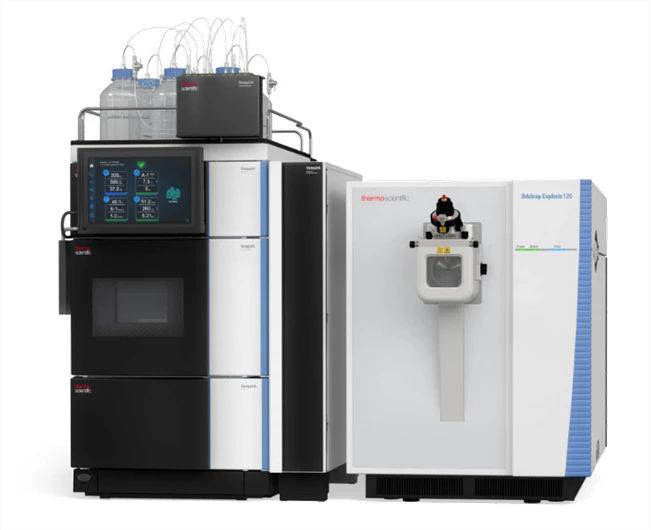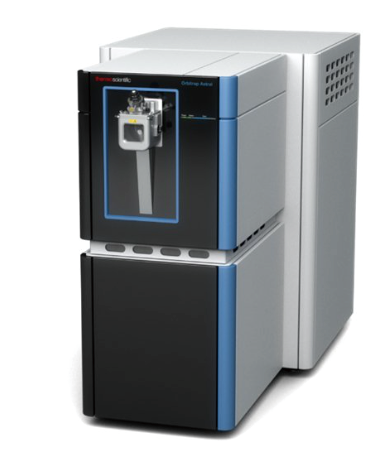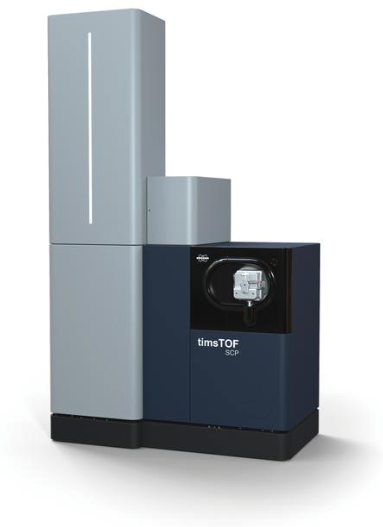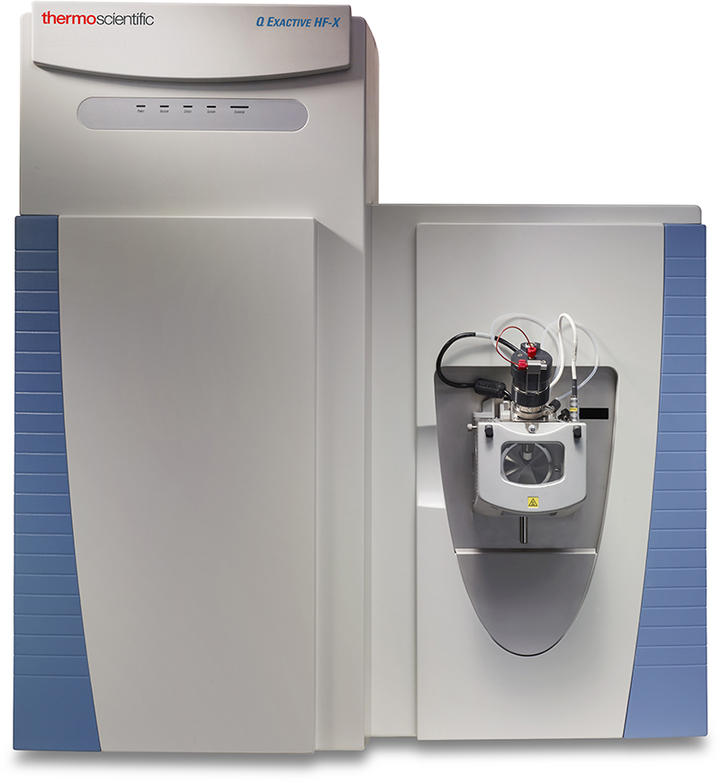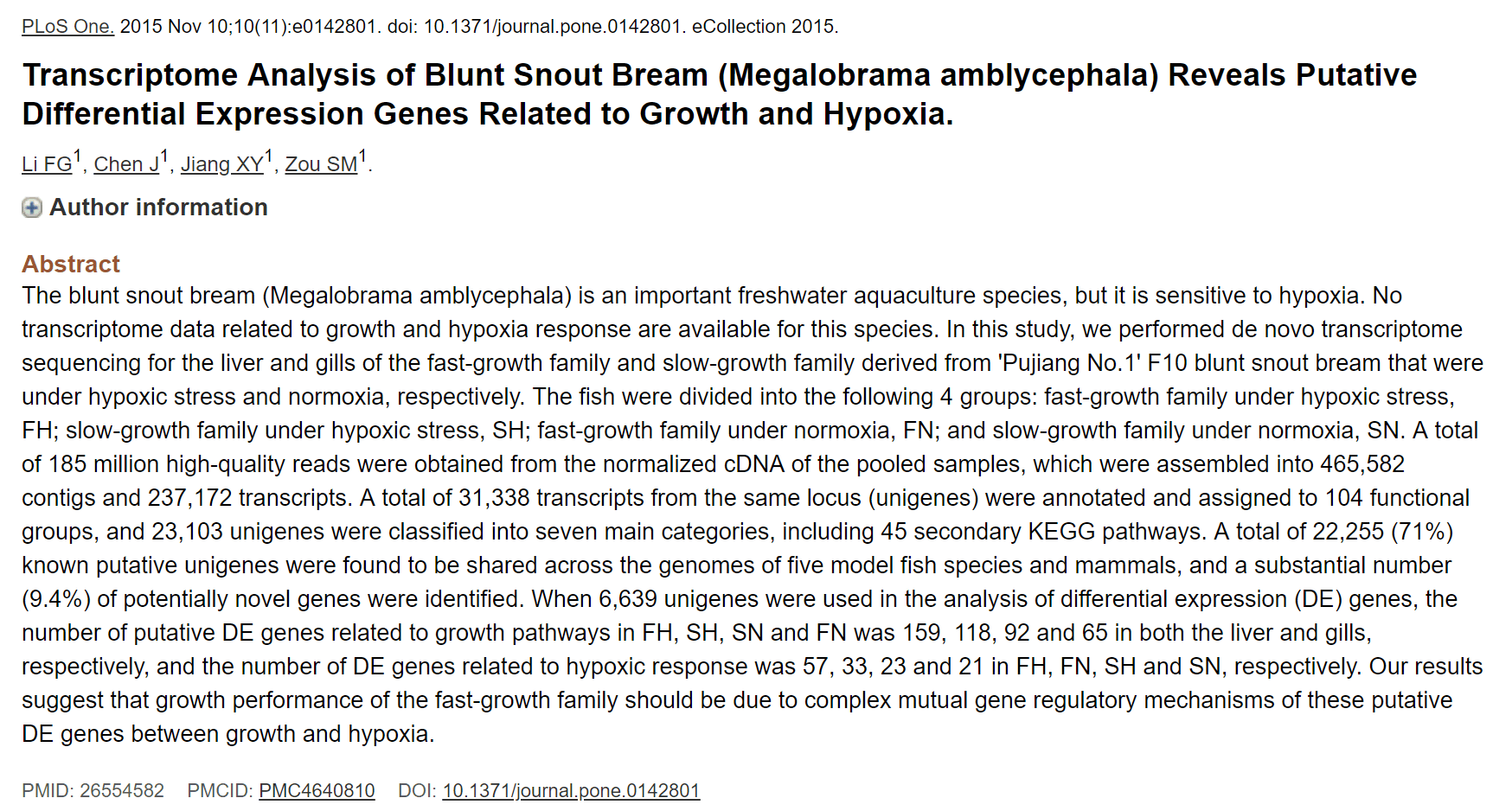
Abstract:
The blunt snout bream (Megalobrama amblycephala) is an important freshwater aquaculture species, but it is sensitive to hypoxia. No transcriptome data related to growth and hypoxia response are available for this species. In this study, we performed de novo transcriptome sequencing for the liver and gills of the fast-growth family and slow-growth family derived from "Pujiang No.1" F10 blunt snout bream that were under hypoxic stress and normoxia, respectively. The fish were divided into the following 4 groups: fast-growth family under hypoxic stress, FH; slow-growth family under hypoxic stress, SH; fast-growth family under normoxia, FN; and slow-growth family under normoxia, SN. A total of 185 million high-quality reads were obtained from the normalized cDNA of the pooled samples, which were assembled into 465,582 contigs and 237,172 transcripts. A total of 31,338 transcripts from the same locus (unigenes) were annotated and assigned to 104 functional groups, and 23,103 unigenes were classified into seven main categories, including 45 secondary KEGG pathways.
Introduction
As a consequence of selective breeding since 1984, the growth rate of "Pujiang No.1," a good breed of the blunt snout bream (F6), was increased by 29% in 1999 [5]. In 2011, the aquaculture industry of the blunt snout bream developed greatly, with a total production of 677,887 tons [6]. However, the blunt snout bream is a hypoxia-sensitive species, and a short period (<2 h) of hypoxia (less than 0.5 mg O2�L?1) at room temperature can be lethal [7]. Therefore, studying the inhibition mechanism of hypoxia on growth may be required for the genetic breeding of this fish species in the future.
Materials and Methods
Ethics statement This study was approved by the institutional review board or ethics committee of Shanghai Ocean University (Permit Number: 2013016). All experiments were carried out in strict accordance with the guidelines on the care and use of animals for scientific purposes set by the Institutional Animal Care and Use Committee (IACUC) of Shanghai Ocean University, Shanghai, China.
Conclusions
We performed de novo transcriptome sequencing of the liver and gill tissues from the fast- and slow-growth families of the blunt snout bream under hypoxic stress and normoxia. Moreover, qRT-PCR data for four DE genes (HIF-1α,HIF-2α, VEGF-A, and EPO) were consistent with and validated the RNA-seq data. Growth performance of the fast-growth family under hypoxic stress may be due to the expression levels of these differential genes. Therefore, some unique molecular mechanisms might have been developed as adaptive strategies to cope with hypoxia in the fast-growth family. Our study will not only lay a foundation for further studies on growth regulation under hypoxic conditions but also facilitate selective breeding for this important aquaculture species.
原文索引:
1. Li SF, Cai WQ, Zhou B. Variation in morphology and biochemical genetic markers among populations of blunt snout bream. Aquaculture. 1993; 111: 117–127.
文章鏈接 :
http://www.ncbi.nlm.nih.gov/pubmed/26554582















